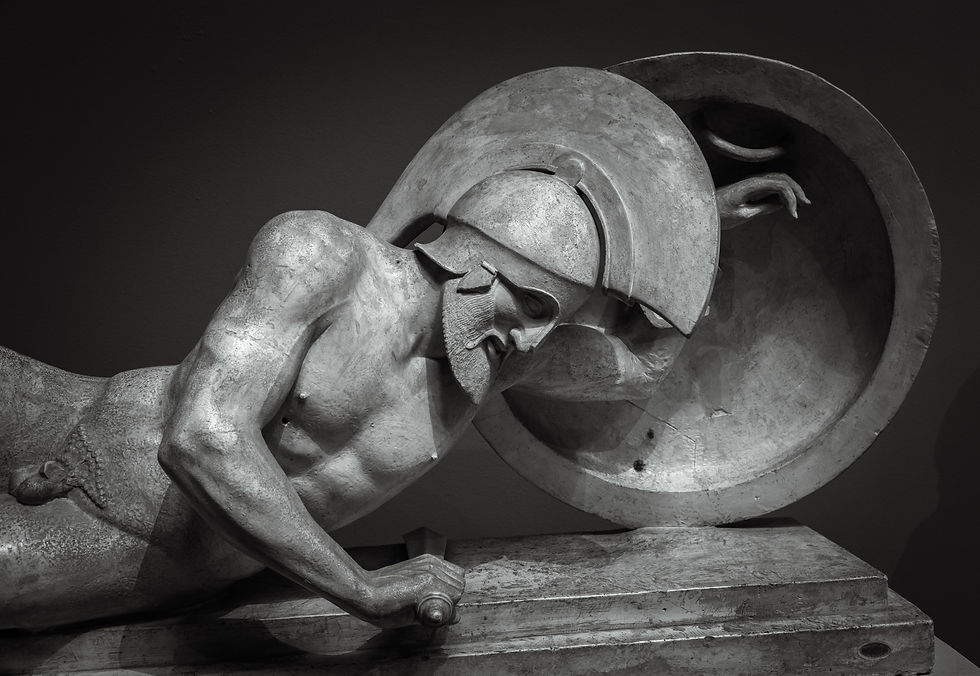Review: Battles and Battlefields of Ancient Greece
- Spartan Stoic

- May 26, 2022
- 4 min read
Updated: Nov 3, 2022
By Jacob Butera and Matthew Sears
"Greece was home to some of the most evocative and decisive battles in the ancient world. This volume brings together the ancient evidence and modern scholarship on twenty battlefields throughout Greece and will be a handy resource for visitors of every experience, from the member of a guided tour to the veteran military historian."
"The introductory chapter outlines some of the most pressing and interesting issues in the study of Ancient Greek battles and battlefields and offers a crash course on ancient warfare. Twenty lively chapters explore battlefields selected for both their historical importance and their inspiring sites. In addition to accessible historical overviews of each battle, this book provides all the information needed for an aesthetically rewarding visit, including transport and travel details, museum overviews, and further reading."
This book aims to give both an overview of key battles between ancient Greek city states, Macedon and Romans from the battle of Marathon in 490 BCE to Actium in 31 BCE. It provides a summary of key events of the battles, a guide on how to visit the site and (simple) colour maps and coloured photography.
The first thing I notice with this book is the quality. It is fantastic. Thick, glossy pages and a heavy feel: it shows its quality. The book has an introduction with a short overview of battle in the ancient world, and then features twenty battles chronologically ordered.
It really is just a selection of the key battles for this period which I think works well. Other books have been more exhaustive, trying to cover a greater number of the many battles over this time (one of which I will have a review coming for, so stay posted on that) but this book strikes a great balance
We go from some of the most well-known key battles, of Marathon, Thermopylae, Salamis, Plataea and Leuctra. These include battles I know well and I was pleased at their coverage. They seemed to include the key points and left some of the more unnecessary detail out. If they had chosen to include everything for all twenty battles I think this book would be a bit of a beast and would probably detract from it. Its purpose to provide a key guide to the facts and the sites, for which the amount of text works well in my opinion.
The book does a good job of recalling the primary sources, for example for the battle of Amphipolis the authors mention Thucydides, who is the main source we have today for the Peloponnesian War, and his calling out of topographical features which help us to reconstruct where the battle take place. This is another sign that the book is effective at leaning on primary sources, and each battle’s text is referenced adequately.
We have the battles of Caesar at Pharsalus and Octavian at Actium.
Who is this book for?
This book is great for people wanting to visit the battle sites. It might be worth reading more comprehensively if you really want to get a detailed account of battles, but for the battles I know in detail I think the balance was struck well.
The maps are often simple but the directions to the battles are comprehensive, describing roads to take, places to stay and more information. The book was published in 2019, so there shouldn’t be much change to these directions, making it recent and still relevant.

To summarise , this book strikes a great balance between historical accuracy, context and brevity, all presented extremely well. For the battle of Plataea the author recalls how the Persian cavalry commander Masistius’ could not be killed, and it led to a heroic effort both for the Greeks trying to take his life:
“Masistius’ himself fought vigorously for his life in the thick of his enemies. He was finally killed when a Greek soldier stabbed him in the eye. A truly Homeric struggle erupted around the body, reminiscent of the pitched battle for Patroclus’ body in the Iliad.” (1)
The book is written with accuracy but also liveliness, making it a great read. The challenge in writing a book such as this would be what to include and exclude, whilst maintaining both the key events and an interesting read. The book does an excellent job of this, making it very hard to criticise. Some of the maps are quite basic, but they serve the purpose of seeing the routes armies took and in-battle movements without to convey the key decisions. More detailed maps may have been better in some instances. The colour photography of the battlefields today is a wonderful addition though, and helps set the scene.
The only potential contradiction might be whether this is a high quality coffee table style book or tour guide. But personally I think it does both of those roles extremely well. If you were to visit the sites take notes from the book or screenshot the directions pages and maps to take with you.
Final score
The book is an excellent edition to any ancient historical warfare fan’s collection. It excels at what it does and its only very minor reasons which justify removing a point - one of which being whether the blend of coffee table book and travel guide as a purpose makes sense. Some of the maps could have been better, and it could always include more battles, but these are very much subjective points. It truly is a beautiful and fantastic book.
9/10
(1) pp.91, Butera, Sears, Battles and Battlefields of Ancient Greece



